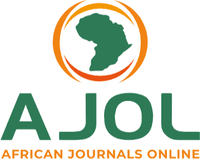PHYTOREMEDIATION STUDIES OF SELECTED PLANT SPECIES ON BIOAVAILABILITY AND HYPER ACCUMULATION OF CADMIUM FROM CONTAMINATED SOIL
Keywords:
Phytoremediation, Cadmium, AAS, Contaminated soil, Bioavailability, Hyper accumulationAbstract
Soil and water contaminated with toxic heavy metals posed significant environmental and human
health hazards that are still in need of an effective and affordable biotechnological solution.
Phytoremedial analysis of soil sample contaminated with cadmium has been carried out using
different species of plants with the aim of finding a solution towards a method that could
effectively mitigate the degree of soil contamination due to toxic heavy metals. This process was
achieved through a controlled experiment carried out in a green house. The soil sample used was
treated accordingly and spiked with 1% of cadmium inform of cadmium nitrate to achieve a
significant level of contamination. Ten different plant species were planted separately in a plastic
vase containing the contaminated soil and allowed to grow along side with control for the period
of eight weeks. After harvesting, the plants were sorted into root, stem and leaves. The cadmium
content of each part was analysed using Atomic Absorption Spectrophotometric (AAS) method
of analysis. The result indicated that the shoot of Ricinus communis accumulated the highest
concentration of cadmium (686.463 0.0028mg/kg), followed by that of Azadirachta indica
(678.888 0.0031mg/kg) and Senna occidentalis demonstrated the lowest level of cadmium
accumulation (11.6500.0005mg/kg). But with respect to the accumulation in the root and stem,
Azadirachta indica has shown the highest cadmium levels of 533.577 0.0035mg/kg and
582.013 0.0018mg/kg respectively, while the lowest level in the root was recorded in
Amaranthus spinosa.(30.922 0.0003mg/kg) and the stem of Jatropha curcas accumulated the
least mean level of 23.634 0.0007mg/kg. The results obtained indicated that the concentrations
of cadmium in the parts of the plants grown in the contaminated soil were greater than those
grown in the unspiked soil as control. It is therefore suggested that the analysed plant species
could be potentially useful in the immobilisation, phytoextraction and subsequent removal of
cadmium from the contaminated soil.





